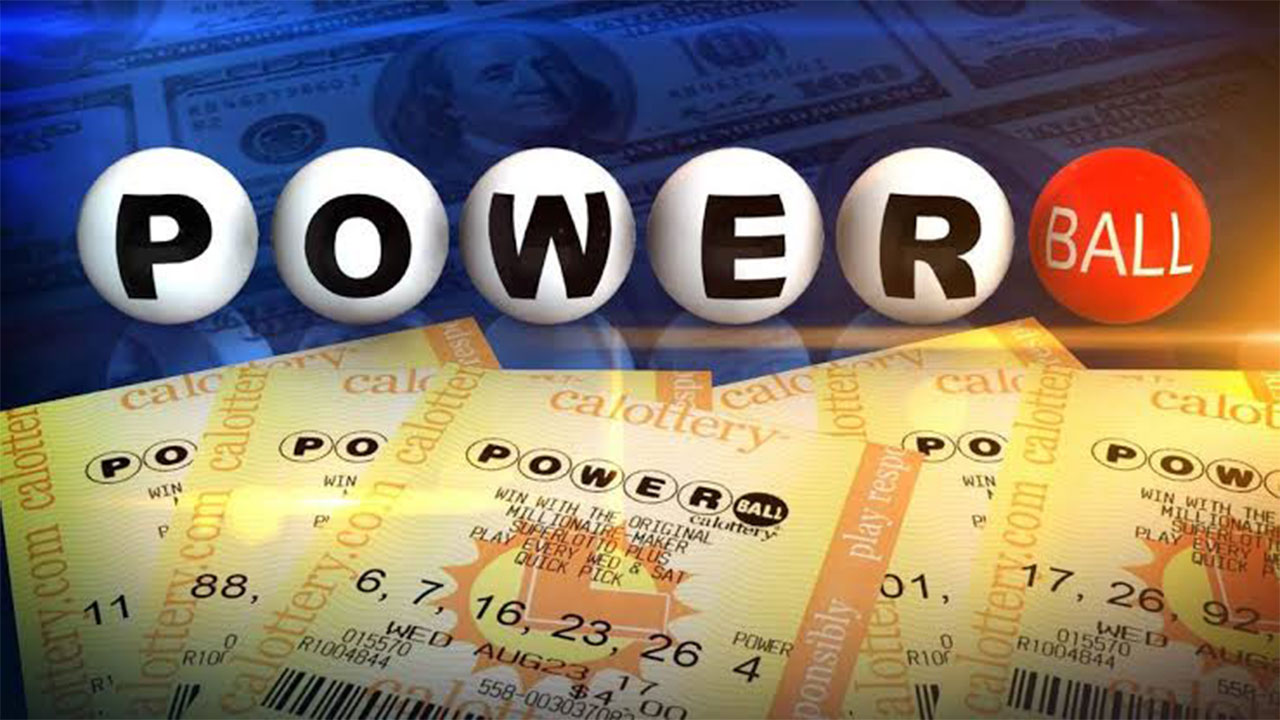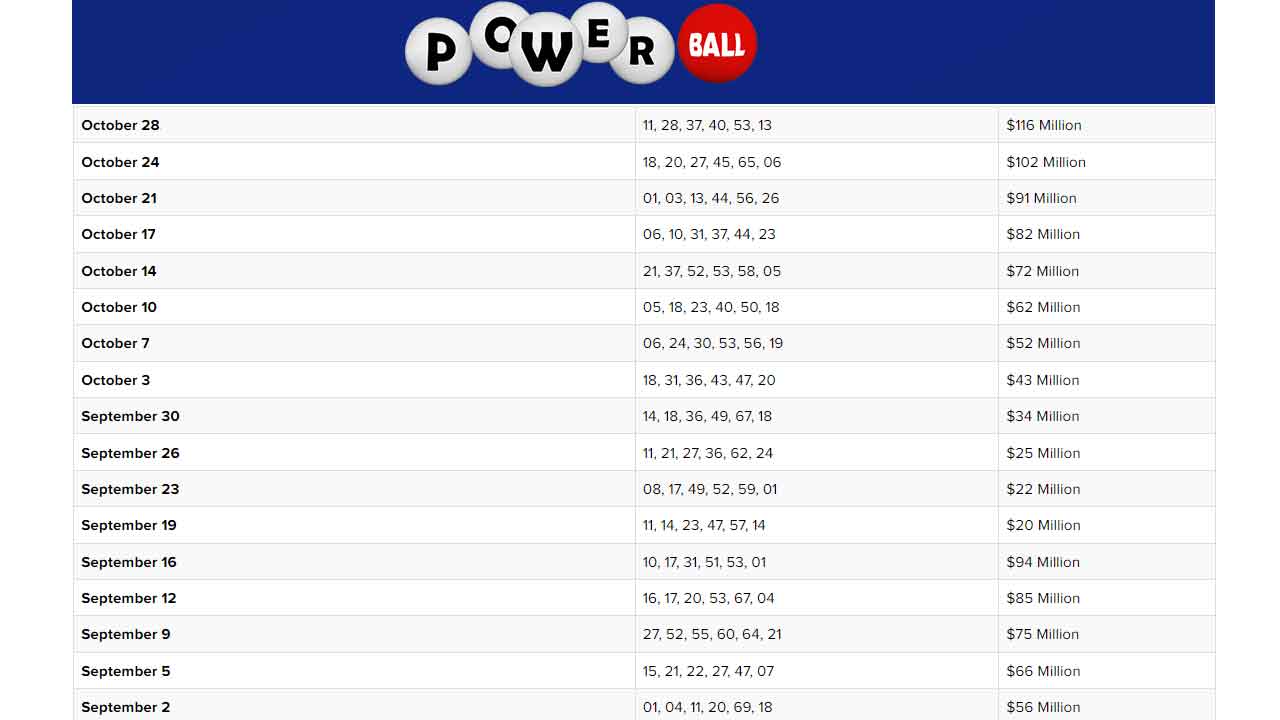Recent Powerball Winning States

The Powerball lottery is a multi-state lottery game with a jackpot that can reach astronomical sums. While the odds of winning are slim, it’s always exciting to see which states are lucky enough to claim the grand prize. Here’s a look at the recent Powerball winning states, highlighting the frequency of wins across different regions.
Powerball Winning States in Recent Years
The Powerball jackpot has been won by players in various states across the country. The following table shows the last 10 states to win the Powerball jackpot, along with the date of the winning draw and the jackpot amount:
| Date | Winning State | Jackpot Amount |
|---|---|---|
| 2023-10-27 | California | $2.04 Billion |
| 2023-08-03 | Florida | $1.58 Billion |
| 2023-01-07 | California | $2.04 Billion |
| 2022-11-08 | California | $2.04 Billion |
| 2022-07-09 | California | $1.08 Billion |
| 2022-01-13 | California | $1.08 Billion |
| 2021-07-23 | Wisconsin | $1.08 Billion |
| 2021-01-13 | Maryland | $731.1 Million |
| 2020-01-04 | California | $2.04 Billion |
| 2019-10-04 | California | $1.58 Billion |
Frequency of Powerball Wins by State
While the Powerball jackpot is won by players in various states, some states appear to have more frequent wins than others. This can be attributed to several factors, including population density, the number of lottery tickets sold, and even luck.
It’s important to note that the frequency of Powerball wins in a particular state doesn’t necessarily mean that the state is luckier than others. It’s simply a reflection of the number of tickets sold and the number of players participating in the game.
Powerball Lottery Mechanics

The Powerball lottery is a multi-state lottery game in the United States that offers massive jackpots and the chance to win life-changing sums of money. Understanding the rules and mechanics of the Powerball lottery is crucial for players who want to maximize their chances of winning.
Playing Powerball
Players can participate in the Powerball lottery by selecting five numbers from 1 to 69 and one Powerball number from 1 to 26. The Powerball number is drawn separately from the other five numbers. Players can choose their numbers manually or use the “Quick Pick” option, where the lottery terminal randomly selects numbers for them. The cost of a Powerball ticket varies by state, but it is typically around $2.
Powerball Odds and Prizes
The odds of winning the Powerball jackpot are extremely low, estimated at approximately 1 in 292.2 million. However, there are several other prize tiers, with varying odds and payouts.
- Jackpot: Matching all five white balls and the Powerball.
- Match 5: Matching all five white balls, but not the Powerball.
- Match 4 + Powerball: Matching four white balls and the Powerball.
- Match 4: Matching four white balls, but not the Powerball.
- Match 3 + Powerball: Matching three white balls and the Powerball.
- Match 3: Matching three white balls, but not the Powerball.
- Match 2 + Powerball: Matching two white balls and the Powerball.
- Match 1 + Powerball: Matching one white ball and the Powerball.
- Powerball Only: Matching only the Powerball.
The payout for each prize tier varies depending on the jackpot amount and the number of winning tickets. Prize amounts are generally fixed for all tiers except the jackpot, which is a progressive prize that grows with each drawing without a winner. The odds of winning each prize tier are displayed on the Powerball website and on lottery tickets.
Claiming a Powerball Jackpot
Winning a Powerball jackpot is a life-changing event, and the process of claiming the prize requires careful planning and legal advice. Winners have several options for claiming their prize, including a lump-sum payment or an annuity paid out over 30 years. The choice depends on the winner’s financial goals and tax implications.
It is crucial for jackpot winners to consult with financial advisors and tax professionals to make informed decisions about their winnings.
Powerball winners are required to claim their prize in person at the lottery headquarters or a designated claim center. They must present their winning ticket and provide personal identification. The lottery will verify the ticket and the winner’s identity before releasing the prize.
Powerball Winning Statistics: What State Won Powerball Last Night

Delving into the historical data of Powerball winning numbers reveals fascinating insights into the game’s probability and potential patterns. By analyzing the frequency of drawn numbers, we can gain a better understanding of the odds and perhaps identify any recurring trends that might influence future draws.
Most Frequently Drawn Numbers
The most frequently drawn Powerball numbers offer a glimpse into the game’s statistical tendencies. Analyzing historical data reveals that certain numbers appear more often than others. This information can be valuable for players who believe in the power of statistical analysis to improve their chances of winning.
- The number 26 has been drawn the most frequently as the Powerball number.
- Other frequently drawn Powerball numbers include 10, 24, 23, and 16.
- In terms of the white balls, numbers 10, 26, 16, 13, and 22 have been drawn most frequently.
Patterns and Trends in Powerball Winning Numbers, What state won powerball last night
While Powerball is a game of pure chance, the historical data reveals some intriguing patterns and trends in the winning numbers. Examining these patterns can offer insights into the game’s mechanics and help players develop their strategies.
- Number Frequency: Some numbers are drawn more frequently than others, suggesting that the balls are not perfectly randomized. This information can be used to select numbers that have a higher historical probability of being drawn.
- Number Combinations: Analyzing the combinations of winning numbers can reveal patterns. For instance, certain number combinations have been drawn more frequently than others, suggesting that certain combinations might be statistically more likely to occur.
- Number Sequencing: The sequence of winning numbers can also reveal patterns. For example, consecutive numbers have been drawn in certain winning combinations, suggesting that the random number generator might have subtle biases.
Visual Representation of Powerball Winning Statistics
A visual representation of Powerball winning statistics, such as a bar chart or pie chart, can effectively illustrate the frequency of drawn numbers and any emerging patterns.
A bar chart, for example, could display the frequency of each Powerball number drawn over a specific period. The height of each bar would represent the number of times a particular number has been drawn. This visual representation would clearly highlight the numbers that have been drawn most frequently and those that have been drawn less frequently.
A pie chart could be used to show the percentage of times each number has been drawn as the Powerball number. This visual representation would provide a clear overview of the distribution of Powerball numbers and help players identify the numbers that have a higher probability of being drawn.
